By CHRIS McGOWAN
By CHRIS McGOWAN
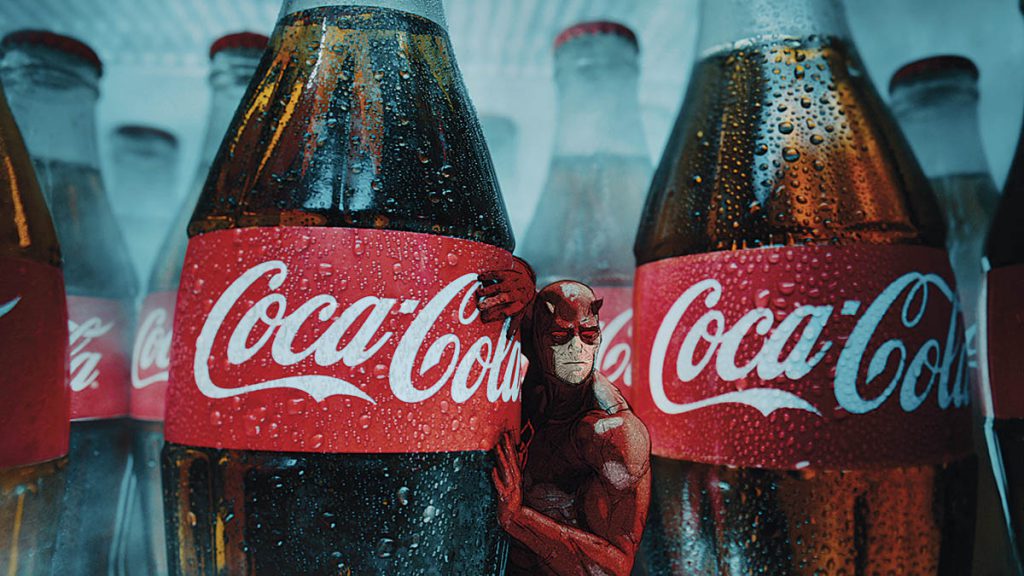
It’s not just advances in traditional VFX software that are transforming advertising, it’s the rise of emerging technologies like generative AI that is reshaping the approach to short-form content creation, according to Piotr Karwas, VFX Supervisor at Digital Domain. “From early stages like storyboarding, concept art and previs, to sometimes even contributing to the final image, this hybrid method of blending generative AI with classic VFX techniques marks an entirely new chapter in effects production,” Karwas states. “Real-time rendering with game engine technology is becoming an increasingly integral part of our VFX workflow. It plays a particularly significant role in previsualization and motion capture, enhancing both speed and creative flexibility.”
Karwas notes, “Digital Domain has a remarkable history of producing high-impact visual effects for advertising and short-form content, consistently pushing the limits of what is achievable in the medium. Since its founding, the studio has delivered cinematic quality and compelling storytelling in commercials, collaborating with some of the industry’s most visionary directors, including David Fincher, Mark Romanek, Michael Bay and Joe Pytka.”
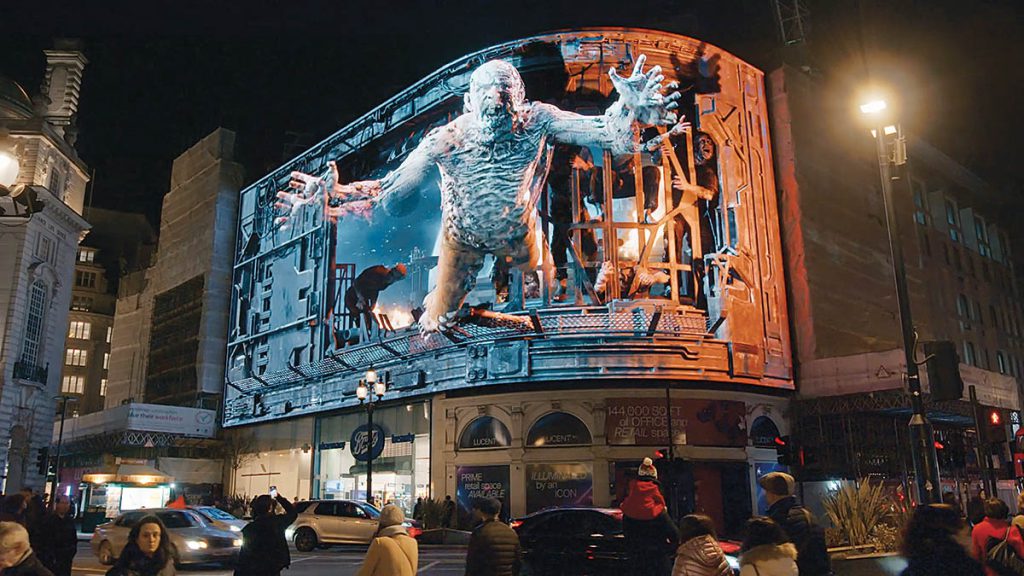
“Whether it’s crafting hyper-real environments, photoreal digital humans or seamless compositing for global campaigns, Digital Domain has played a pivotal role in redefining audience expectations for brand storytelling,” Karwas says. From Super Bowl commercials to global product launches, he comments, “the studio’s ability to combine cutting-edge visual effects with engaging narratives has made it a preferred partner for major brands aiming to make a bold and immersive statement in a competitive advertising landscape.”
“Visual effects and advanced digital technologies are transforming how brands engage with audiences,” adds Karwas. This includes the growth of interactive and immersive advertising. He explains, “Digital Domain is at the forefront of this change, utilizing its innovative digital human technology to create experiences that go beyond traditional media. A powerful example is The March 360, a real-time virtual reality experience that not only tells a story but also places viewers inside a pivotal moment in history. By authentically recreating the 1963 March on Washington and digitally resurrecting Dr. Martin Luther King Jr. to deliver his ‘I Have a Dream’ speech, Digital Domain has shown how VFX can produce emotionally resonant and immersive content that is both historically significant and technologically innovative. This goes beyond mere advertising; it is experiential storytelling that blurs the line between reality and digital creation, engaging audiences on a deeply human level.”
Electric Theatre Collective demonstrated cutting-edge visual effects in “Coca-Cola – The Heroes,” for which it won the Outstanding VFX in a Commercial prize at the 2025 VES Awards, as well as the best “Lighting & Compositing” award. Directed by Antoine Bardou-Jacquet, the project merged two iconic brands: Coca-Cola and Marvel. The visual effects and animation were integral to the storytelling. “From the outset, the campaign needed three things: carefully designed interpretations of key Marvel characters, CG development and animation of those characters, and vibrant color grading,” says Ryan Knowles, Electric Theatre Collective Creative Director.
“After some early engagement where we created some test animations for Antoine and the agency, GUT [Buenos Aires], we were brought in as a key creative partner for the campaign,” comments Greg McKneally, CG VFX Supervisor at Electric Theatre. “The brief for this project was to bring illustrated and sculpted Marvel heroes to life, seamlessly embedding them in the real world of a comic shop. We needed to tell a dramatic story while retaining a unique look for each character based on the medium they originated from: comic book, t-shirt or collectible.” McKneally notes, “With dynamic camera work and physical interactions, we decided the base of each character needed to be CGI. To maintain authenticity, we used traditional 2D animators, illustrators and painters throughout the process, adding hand-made elements into scenes. This approach allowed us to bridge the worlds of comic book art and high-end CGI, allowing for complex scenes in the physical world of the set, with a hand-crafted 2D feel.”
McKneally continues, “Our primary software pipeline involves Maya for modeling, rigging and animation; Houdini for shading, scene assembly, lighting, FX simulation and rendering; and Nuke for compositing. Houdini, and a number of different custom tools built within it for the project, formed the backbone of the creation of the stylized character, including Paintify 2.0, which allowed us to create Daredevil as a moving water-color and pencil illustration.”
To achieve the look of Black Widow as a 2D illustrated character moving in three dimensions, Electric Theatre worked with a traditional comic book concept artist to develop a set of consistent illustrations. Knowles explains, “These were used as a guide for the development of the CG character, and we also trained a bespoke machine learning model on this original concept art. This machine learning model was used to process and filter some of the CG renders of the character. It was a key ingredient in the recipe of the final look of Black Widow, which was crafted in compositing.”
“Simple real-time rendering was used extensively in the previs phase of the project, during which we carefully mapped out each camera move and blocked out the animation for the scenes in Maya,” McKneally says. “We were able to rough out the placement of the lights and key shadow elements, as well as the characters themselves. To create the unique shading style of Juggernaut, we built a custom shading system which generated the shadows as geometry in the scene, meaning that the artists working in Houdini had a real-time preview that was very close to the final look of the character.”
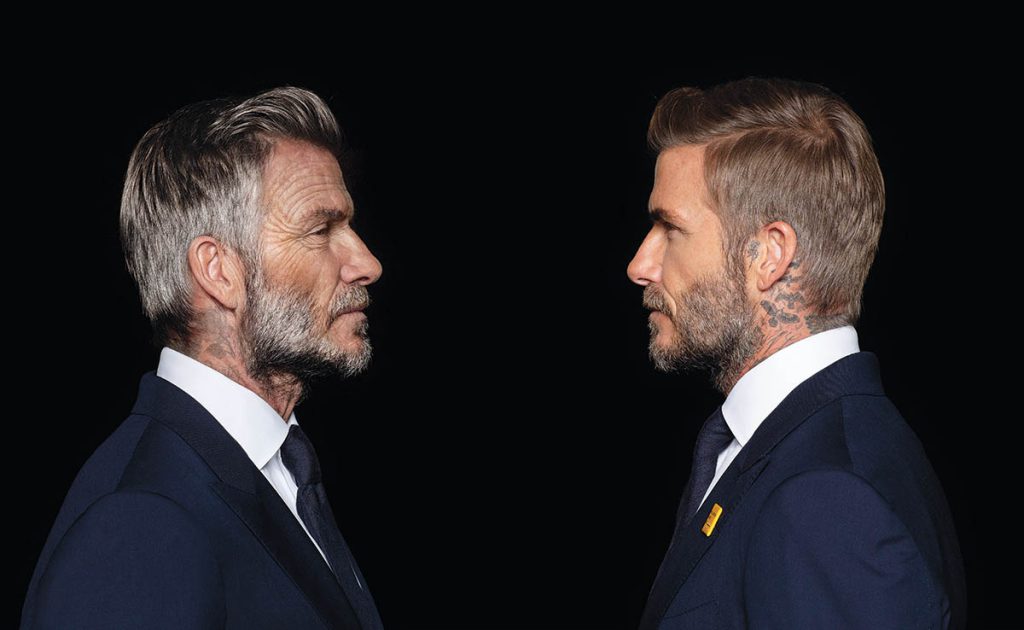
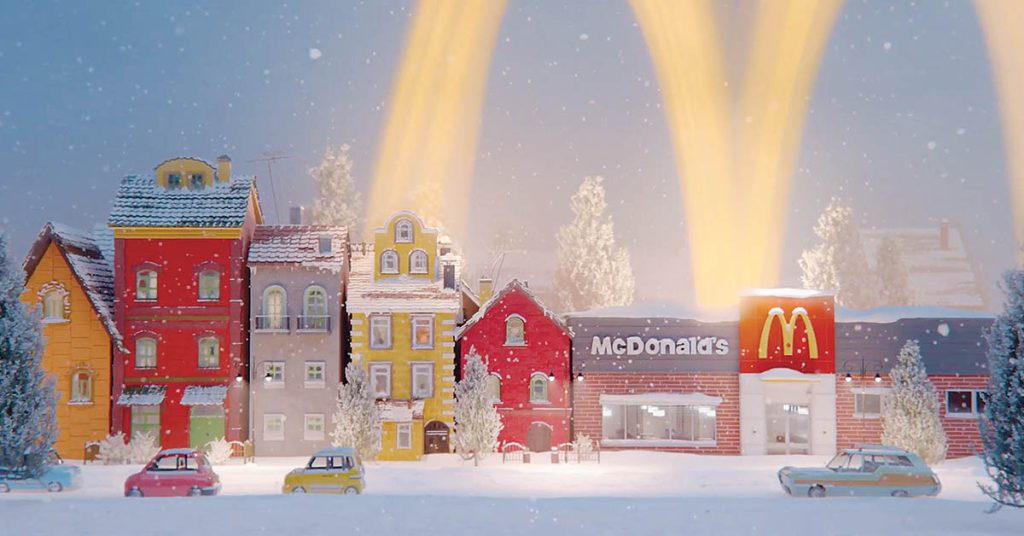
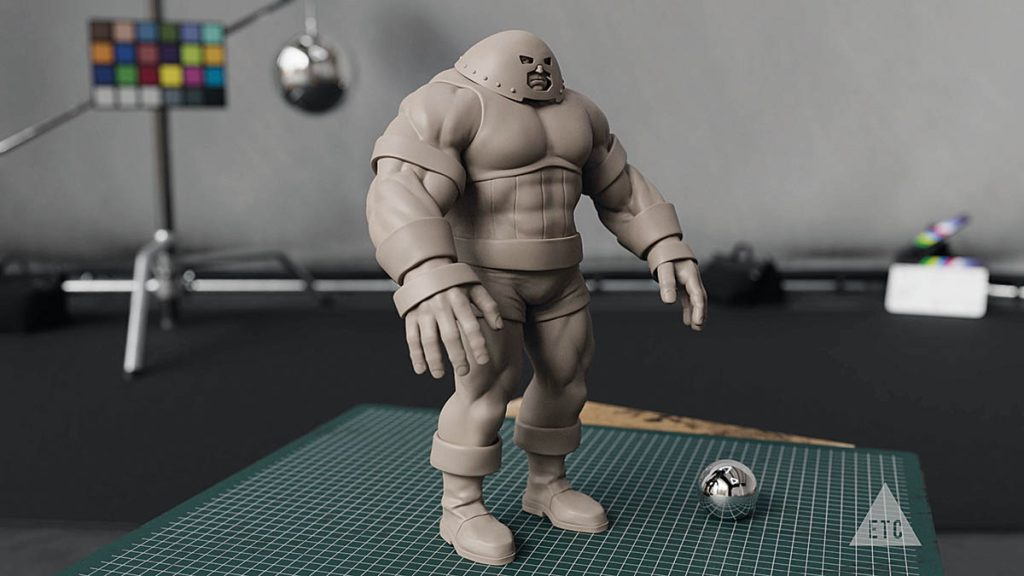
“The biggest challenge in this project was that each character required a different technical and creative approach,” McKneally says. “For example, while Colossus is a resin maquette and could use a more conventional CG approach, Juggernaut is inspired by 1980-1990s comics. He is a 3D animated character, but has a limited color palette and uses a bespoke shading system, hatch line geometry, mid-tone shadow mattes which reveal classic printed half-tone shading, and hand-painted 2D animated expressions. All of this was composited together with mis-printing filters, bleed, grain and irregular line work to achieve the final look.” McKneally adds, “Meanwhile, Captain America and the comic book city features custom toon shaded CG, hand-painted buildings carefully recreated and textured in CGI, hand-painted skies, a custom line-work system, 2D FX animation and crowd simulations.”
Daredevil was one of the most complex challenges. “His entire look is an evolving water-color painting with pencil details,” Knowles comments. “The paint strokes that define his form had to feel 2D but still react in a realistic way to the lighting of the environment he was moving through. This was achieved in a combination of 3D lighting and an evolution of our bespoke 3D paint system in Houdini – originally developed on ‘Coca-Cola Masterpiece’ – and then assembled and finessed in the hands of the compositors.” According to McKneally, “3D animation and compositing tools are progressing at a rapid rate. This, combined with the incredible pace of development for machine learning tools, means that the tech landscape for visual effects in advertising is evolving at speed. At Electric, we have created a workflow that allows artists to harness the latest developments in image generation, animation, rendering and compositing, staying nimble and flexible enough to swap new tools into our workflow as the technical or creative demands evolve. We’re finding many projects now benefit from a bespoke combination of traditional and emerging tools.”
Knowles observes, “One of the biggest challenges we have seen comes from rapid AI image generation. Polished images generated by all parties – agencies, clients, directors – which help to sell a concept or idea, but risk shortcutting the creative development. It’s a high level of finish in a very short time, but can often lack the nuance, depth and personality that multiple iterations in a traditional concept art development process can achieve. We strive to strike a balance.” Knowles adds, “To bring this nuance back into the fold, our creative team uses a mix of traditional design and animation workflows to iterate ideas and then engage custom machine learning workflows to add polish and variation. This allows for rounded creative development with the high level of ‘finish’ now expected by agencies, directors and clients. As machine learning image and video generation becomes more and more available – and quality improves – having the ability to guide the artistry that underlies the final image becomes even more valuable for creating original, breathtaking work,” McKneally explains.
“As an end-to-end production house, VFX is at the heart of what Alongside does,” says Glen Taylor, Founder of Alongside Global. “VFX is central to our efforts in the advertising industry, and this trend isn’t slowing down. We use it all the time to drive storytelling, realism and creative innovation. From compositing and CG to AI-enhanced workflows, VFX helps shape our final output across our projects. We just created a new website for the healthcare company Calcium, where we built an asset in 3D. VFX spans mediums.”
The pace of change is intense in VFX software and tech and greatly affects advertising. “New tools are released every day – face swaps, language transcription and translation, and AI scene building, to name a few,” Taylor says. “Unreal Engine is already transforming how we work. It allows for live client feedback, instant changes and scalable outputs from AR and VR to social and film. Once we hit photorealism in real-time, it will become the core production tool.” He adds, “The challenge is knowing what to use and when. We’re experimenting constantly, especially with AI-generated content that’s licensing-safe and creatively sound. The goal isn’t to replace creativity – it’s to move faster and smarter.”
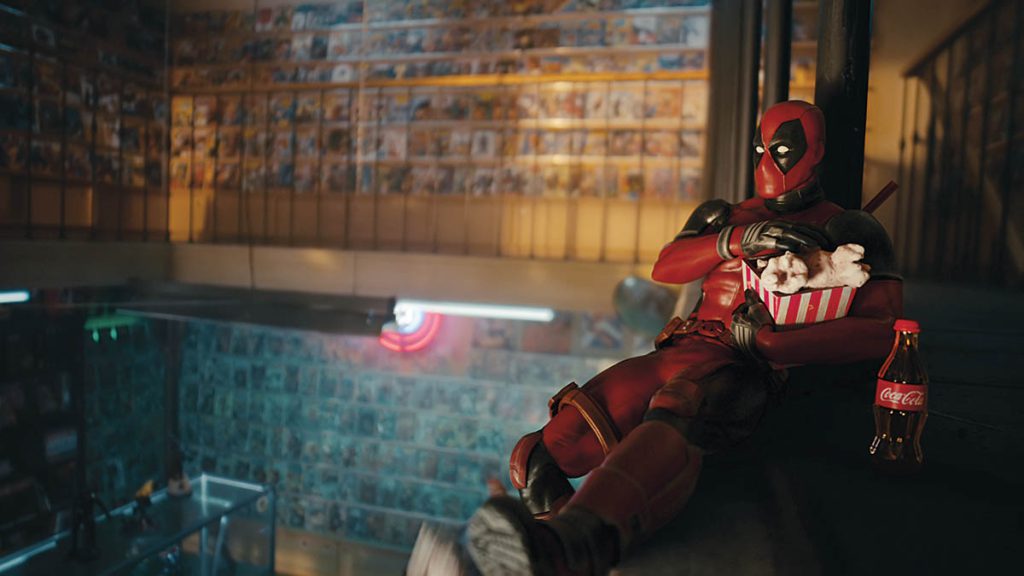
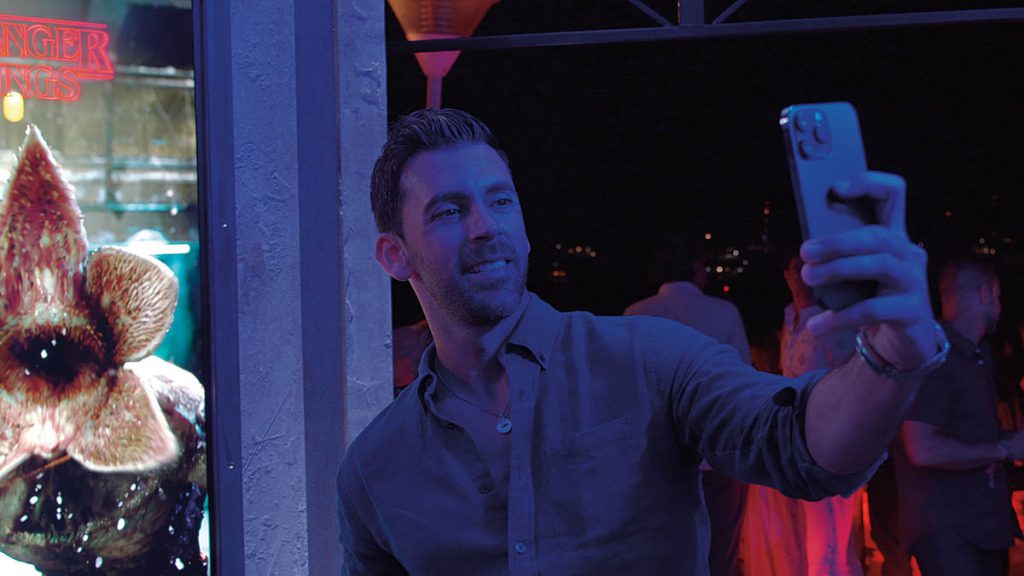
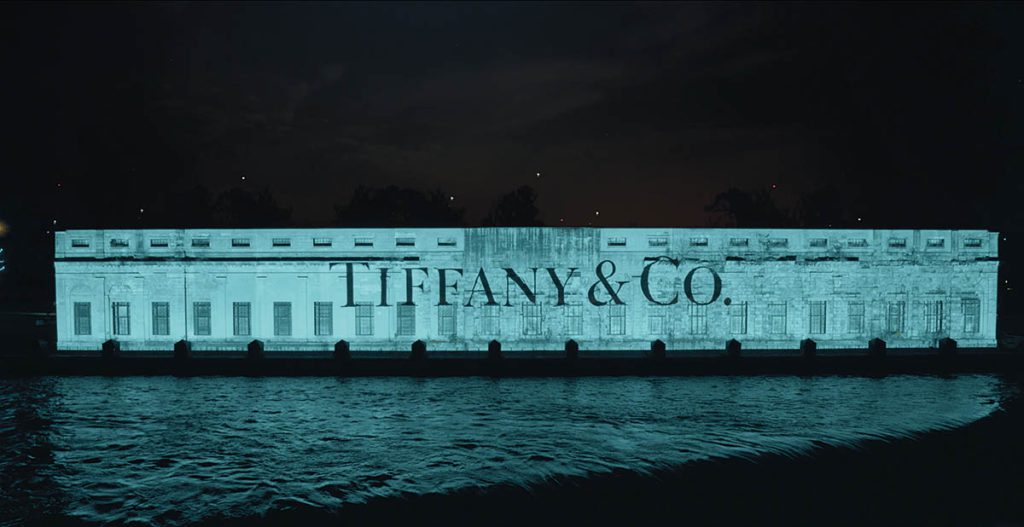
Rodeo FX has delivered visual effects for many advertising clients, including McDonald’s, Nissan, Red Bull and Tiffany & Co. Ryan Stasyshyn, VFX Supervisor and head of the Toronto office for Rodeo FX, remarks, “Content creation has become remarkably accessible, especially with the integration of AI. Simultaneously, our clients are increasingly seeking greater levels of collaboration throughout the creative process.” Real-time rendering is coming into play in production and VFX for advertising. “That said, I think it’s worth noting that real-time has a number of hurdles that need to be addressed before it becomes the mainstay of the industry. In regard to real-time rendering to output final frames in a traditional VFX approach, I believe the industry is at that point and, depending on the studio, is either there or going to be there shortly. As real-time rendering pertains to virtual production, I think its use has shown real promise but also a large barrier, with education of the users being the biggest hurdle. The technology is there, and the talent in the industry can certainly support it. I think we may have done ourselves a disservice by overhyping it a little too much out of the gate and sometimes setting unrealistic expectations.”
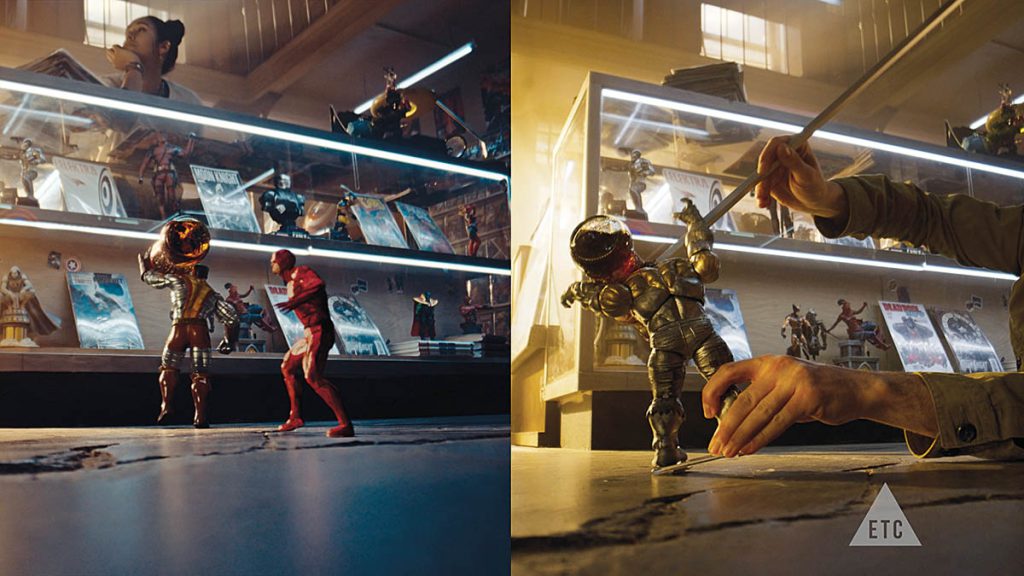
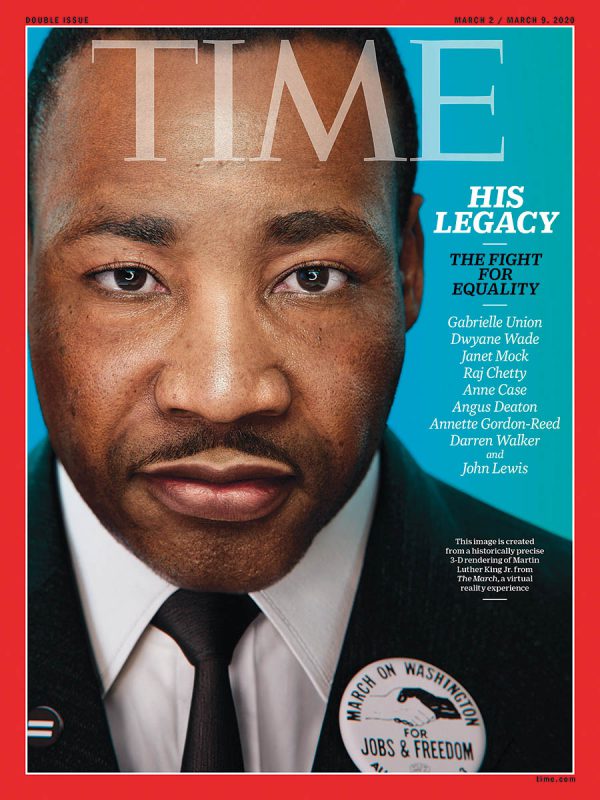
Erik Gagnon, VFX Supervisor and Flame artist for Rodeo FX, says, “Rodeo FX’s work in advertising is decisively oriented toward the future through the proactive integration of artificial intelligence into our creative process. This approach enables us to provide our clients with a highly personalized and innovative partnership, elevating their original concepts into stunning visuals and unique storytelling experiences. Advancements in VFX tools and technologies are profoundly transforming our approach to advertising. Today, we focus less on isolated software and more on comprehensive ecosystems of specialized tools, allowing us to push creative boundaries. These developments make our production pipelines more adaptive and supports artists in becoming increasingly versatile and agile.”
Gagnon continues, “We are witnessing the rise of interactive and immersive advertising powered by VFX. Rodeo FX has crafted visually compelling experiences, such as 3D billboards in iconic locations like Times Square and Piccadilly Circus for The Callisto Protocol. Additionally, during the Cannes Film Festival, Rodeo FX Ads & Experiences created an ingenious activation for Stranger Things, captivating attendees and sparking their imaginations. The synergy between VFX, advertising, and experiential marketing represents an ideal combination to genuinely bring brands to life. By integrating cutting-edge visual effects into interactive environments, we engage audiences more deeply, stimulating their senses and creating memorable brand connections. This powerful blend not only elevates brand awareness but also ensures impactful and lasting impressions.”
Franck Lambertz, VFX Supervisor and head of Rodeo FX’s Paris office, sees AI-powered image and video generation as “an exciting new playground.” He notes, “While the technology is still developing and can be unstable, we see it as another valuable tool in our creative arsenal. It still requires passion and expertise to avoid clichés and elevate the final result. Our roles may become less technical and more focused on creative leadership.” Lambertz continues, “Increasingly, clients arrive with well-developed reference decks. Thanks to tools like Midjourney, some directors have already visualized their concepts. This makes the creative process more efficient and enables us to work together more effectively to finalize the vision.” Lambertz adds, “Sometimes, clients challenge us with real-time projects. Depending on the brief, we assemble the right pipeline and talent to deliver top-tier visuals. Recently, we completed a VR experience for a live event in Paris – our first time producing a 7K, 60fps stereoscopic render, fully synchronized with fan and lighting effects. Watching the team immerse themselves in the experience with VR headsets and exchange feedback was a memorable moment.” Concludes Karwas, “Advertising is rapidly entering a new era. The integration of generative technologies and VFX is unlocking entirely new possibilities for connecting with audiences, enabling brands to engage and interact with customers in ways that were previously unimaginable.”